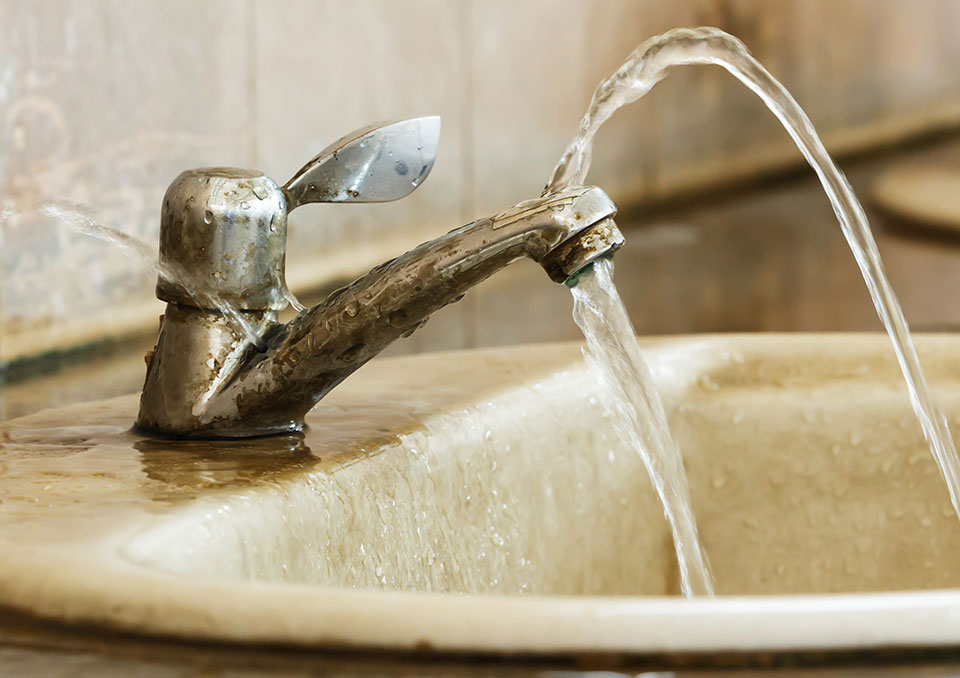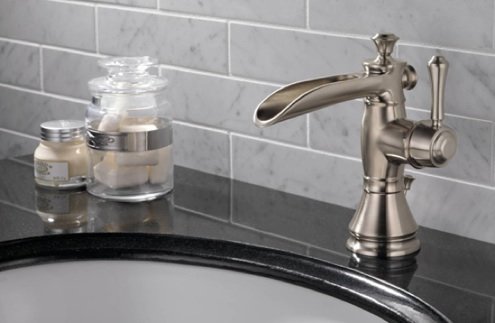Our Causes Behind Fixing a Dripping Faucet
Our Causes Behind Fixing a Dripping Faucet
Blog Article
We have uncovered the article about Leaky Faucets: Why They Happen & What to Do About Them below on the internet and decided it made perfect sense to talk about it with you here.

Trickling faucets might seem like a small trouble, however their impact goes beyond simply the nuisance of the sound. From drainage to sustaining unnecessary economic expenses and wellness dangers, ignoring a trickling faucet can bring about different consequences. In this post, we'll delve into why it's vital to address this typical household problem without delay and effectively.
Waste of Water
Ecological Impact
Leaking taps add considerably to water waste. According to the Epa (EPA), a solitary faucet dripping at one drip per second can lose greater than 3,000 gallons of water each year. This not just pressures water sources yet additionally influences communities and wildlife dependent on them.
Step-by-Step Guide to Repairing a Dripping Faucet
Tools Needed
Before attempting to repair a leaking faucet, gather the necessary tools, consisting of a flexible wrench, screwdrivers, replacement parts (such as washing machines or cartridges), and plumber's tape.
Typical Faucet Issues and Their Solutions
Identify the sort of faucet and the specific concern triggering the drip. Common issues include damaged washers, rusty valve seats, or faulty O-rings. Describe supplier directions or online tutorials for detailed guidance on repair services.
Financial Costs
Boosted Water Costs
Beyond the ecological influence, dripping taps can pump up water expenses considerably. The built up waste with time translates into higher utility costs, which can have been stayed clear of with timely repair work.
Prospective Building Damage
Additionally, extended leaking can result in damage to fixtures and surfaces surrounding the tap. Water buildup can trigger staining, rust, and even architectural concerns if left unattended, causing added repair service costs.
Health Problems
Mold And Mildew and Mildew Development
The continuous presence of dampness from a leaking tap produces a perfect atmosphere for mold and mildew and mildew development. These fungi not just compromise interior air quality however additionally present wellness dangers, specifically for people with respiratory conditions or allergic reactions.
Waterborne Conditions
Stagnant water in leaking taps can come to be a breeding ground for germs and various other virus, raising the risk of waterborne diseases. Pollutants such as Legionella germs thrive in stationary water, potentially bring about serious diseases when ingested or inhaled.
DIY vs. Expert Repair work
Benefits and drawbacks of Do It Yourself Fixing
While some might attempt to take care of a trickling faucet themselves, DIY repairs feature their very own set of obstacles. Without correct understanding and tools, do it yourself attempts can exacerbate the concern or result in incomplete repair services, extending the trouble.
Benefits of Working With an Expert Plumber
Working with an expert plumber makes certain that the underlying reason for the trickling faucet is attended to effectively. Plumbing technicians have the competence and devices to detect and repair faucet problems effectively, conserving time and minimizing the danger of additional damages.
Ecological Duty
Specific Payment to Preservation
Taking responsibility for fixing dripping faucets aligns with broader initiatives towards water preservation and environmental sustainability. Every individual's actions jointly make a substantial influence on protecting valuable resources.
Sustainable Living Practices
By focusing on timely repair work and adopting water-saving behaviors, individuals contribute to lasting living techniques that benefit both existing and future generations.
Safety nets
Regular Maintenance Tips
To prevent trickling faucets, perform regular maintenance such as cleansing aerators, examining for leakages, and replacing damaged parts without delay. Additionally, take into consideration installing water-saving gadgets or updating to much more effective components.
Importance of Prompt Fixes
Resolving dripping faucets as soon as they're observed protects against more water wastage and potential damage, ultimately saving both water and money over time.
Effect On Residential Property Worth
Assumption of Well-Maintained Home
Maintaining a residential or commercial property in good condition, consisting of dealing with upkeep concerns like leaking faucets, enhances its regarded value and value amongst possible purchasers or renters.
Impact on Resale Value
Residences with well-maintained plumbing components, including taps, command higher resale worths in the real estate market. Resolving leaking taps can contribute to a favorable impact during building evaluations and arrangements.
Conclusion
Attending to a trickling faucet goes beyond simple ease; it's an important step toward saving water, lowering economic costs, and protecting health and residential or commercial property. Whether with DIY repairs or professional assistance, doing something about it to deal with leaking faucets is a small yet impactful means to advertise accountable stewardship of resources and add to a healthier, more lasting future.
How to Fix a Leaky Faucet: Step-by-Step Repair Guide
A leaky faucet may seem like a simple annoyance, but if it's not fixed promptly, that leak could cost hundreds to potentially thousands. From water damage to mold, mildew, and high water bills, even a tiny leak can be catastrophic if left unattended. Damage like this can even affect the overall value of your home, so it's important to take the right approach for leaky faucet repair. You may need the help of a plumber in some cases, but we've got a few tips you can try on how to fix a leaky faucet before calling the pros.
Four Faucet Types
When you're learning how to fix a leaky faucet, the first step is knowing what kind of faucet you're working with! There are four common types.
Cartridge Faucets
Cartridge faucets come in one- or two-handled varieties. In one-handled cartridge faucets, hot and cold water combines in a single cartridge. In the two-handled versions, hot and cold water are controlled separately and mixed in the faucet.
Ball Faucets
Ball faucets have a single lever you push up and down to adjust the pressure and rotate to change the temperature. A slotted metal ball controls the amount of water allowed into the spout.
Compression Washer Faucets
They're the oldest type of faucet, but they're still used in many homes — especially older ones. Compression faucets have two separate handles that, when turned, raise or lower the washer that seals a water valve. This valve stops water from flowing through the faucet when it is turned off.
Disc Faucets
Disc faucets rarely need to be repaired due to their maintenance-free design. The water flow is controlled by two discs — the upper one raises and lowers against a fixed lower disc, creating a watertight seal. If your disc faucet starts leaking, you may need to replace the seals or clean residue buildup from the inlets.
Fixing a Leaky Faucet
Step 1: Turn Off the Water
Whether you're learning how to fix a leaky bathtub faucet or how to fix a leaky kitchen faucet, always turn off the water supply to your working area when you're fixing a leak. The last thing you want is a flood added to your list of things to fix.
Look for the shutoff valves below your sink or around the tub and turn them clockwise to stop the water flow. If your faucet doesn't have shutoff valves, you may need to turn off the water for the whole house. Check to make sure it's off by turning the faucet on. If nothing comes out, you're ready to start the repair.
Step 2: Take Apart the Faucet
How you disassemble your faucet depends on the type of fixture you have. You can use a flathead screwdriver to remove the caps on top of the handle or handles for cartridge and compression faucets. Inside, you should see handle screws. Unscrew these with a screwdriver to remove the handle.
Disc- and ball-style faucets will typically have an inlet screw near the handle, and removing that will reveal the interior of the faucet.
Detach the Valve Stem
For cartridge- and compression-style faucets, you'll see the inner valve stem or cartridge once you remove the faucet handles. If you have a compression faucet, unscrew the brass valve stem. If you have a cartridge faucet, pull out the cartridge. If your cartridge has been in place for a while, it may require some tools or extra force to remove it due to mineral deposits.
Examine and Replace Parts
Once you've removed the parts, check them out to confirm what needs to be replaced. You may see corroded rubber washers, O-rings, stems, or cartridges. On a ball-style faucet, check the seats and springs for damage.
If you need to repair a leaky disc faucet, check the inlet and seals on the lower disc.
Once you determine what parts must be replaced, visit your local hardware store. Bring the damaged parts with you to ensure you can purchase the correct components to replace them.
Clean Valves and Faucet Cavity
If you've removed a stem or cartridge, you may notice mineral buildup in the faucet's threads. Use white vinegar to clean the valve seat by soaking it for a few minutes, then scrub it away with a soft toothbrush and rinse with warm water. You can also clean the interior of the faucet in the same way.
Reassemble the Faucet
Once your faucet is cleaned and the required parts have been replaced, it's time to reassemble it. Put the pieces back together and slowly turn the water supply back on. Doing this slowly is crucial because too much initial water pressure can damage the new hardware you've just installed.
https://homewarranty.firstam.com/blog/how-to-fix-leaky-faucet

Hopefully you liked our topic about Why Is It Important To Fix Your Leaking Tap/Faucet?. Thank you for taking a few minutes to read our content. For those who appreciated our blog posting please do not forget to share it. Thanks a lot for being here. Return soon.
Report this page